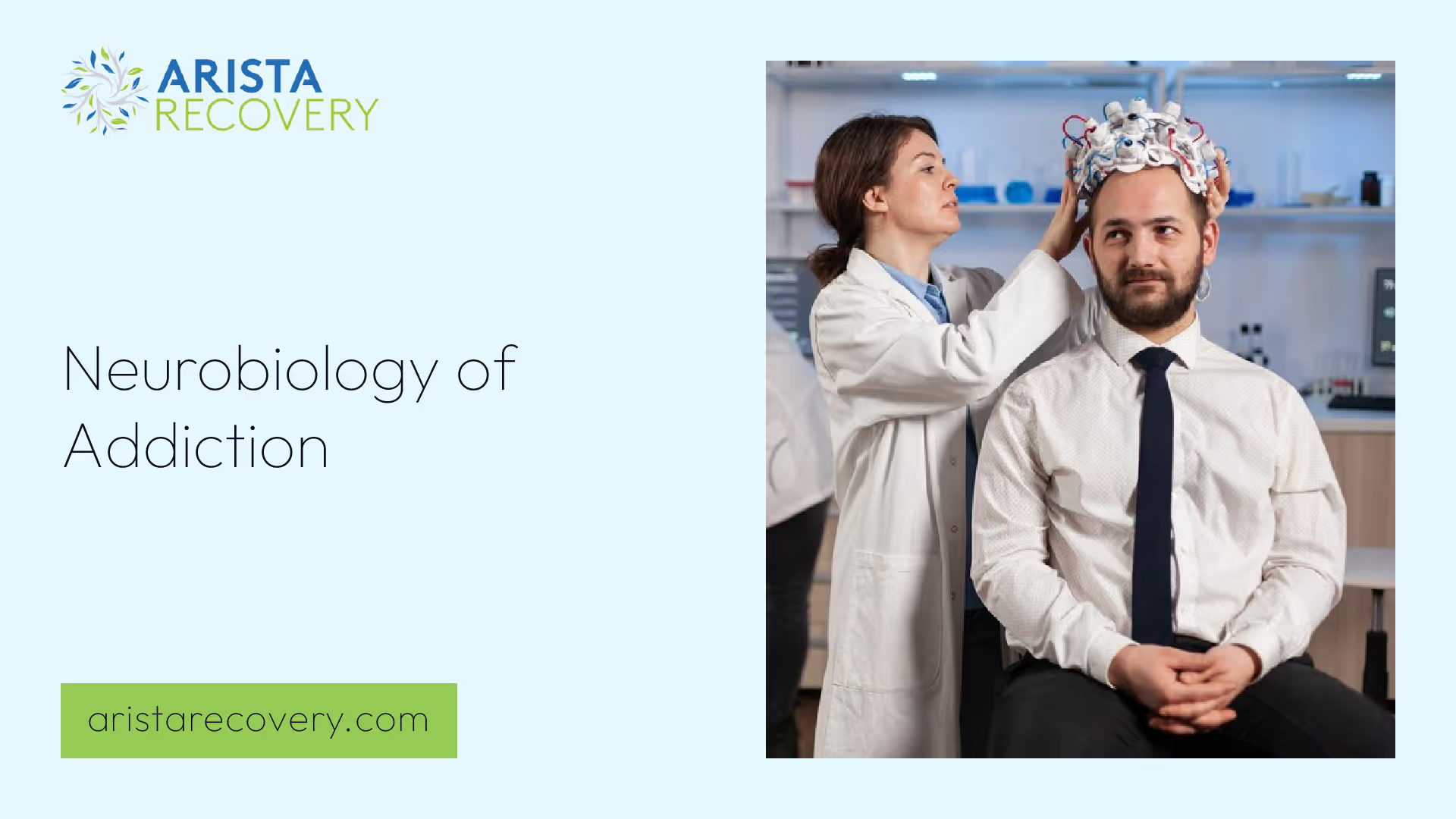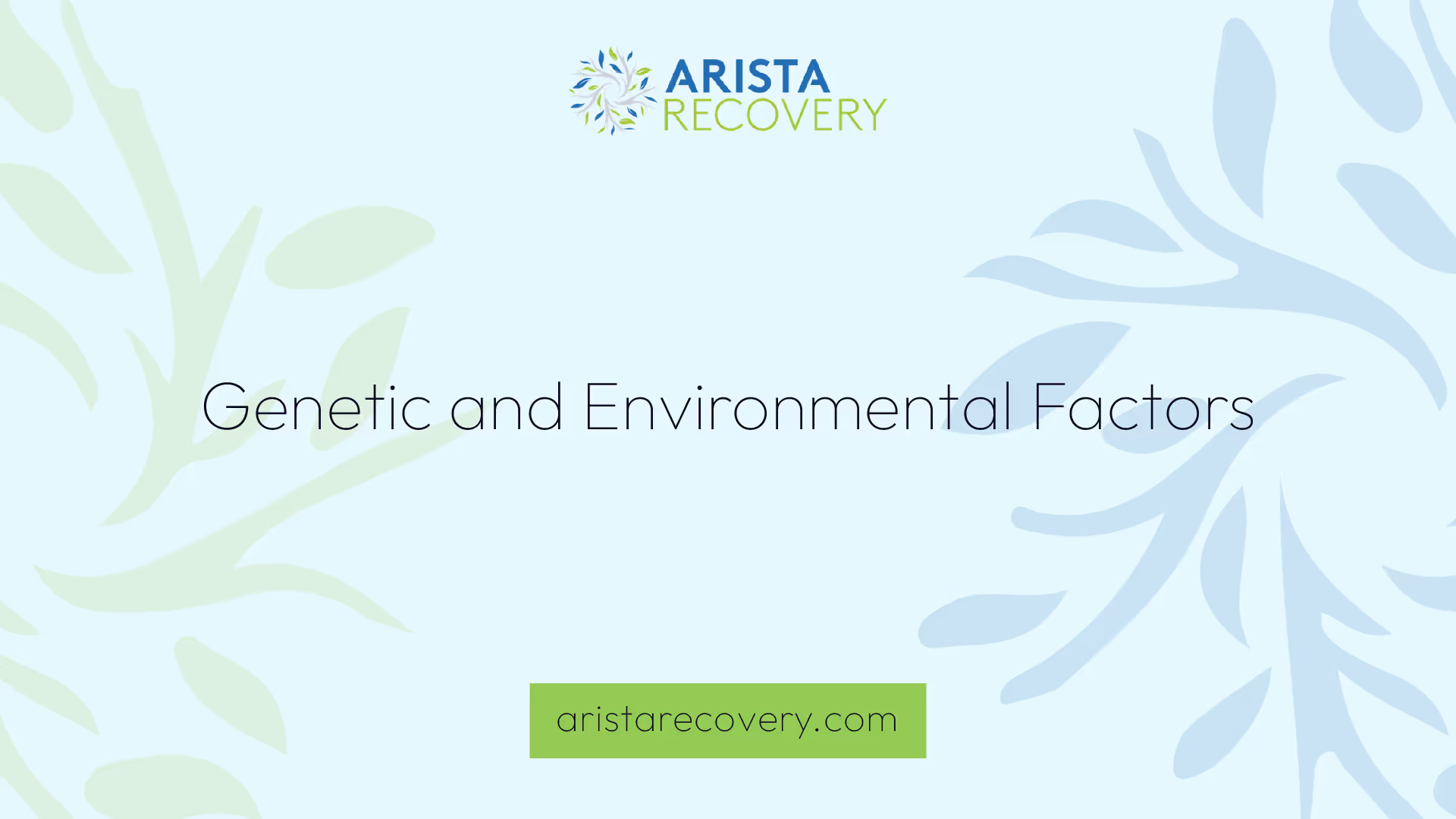Neurobiology of Addiction


Understanding Addiction as a Disease
The concept of addiction has evolved over the years, with a growing consensus in the medical and scientific community that addiction is a complex brain disease, not a moral failing or a lack of willpower. This shift in understanding, from a behavioral problem to a medical condition, has significantly influenced the approach towards prevention and treatment methods.
Neurobiological Basis of Addiction
The neurobiology of addiction is a critical factor in understanding addiction as a disease. Addiction is a long-lasting and complex brain disease that can lead to destructive behaviors, such as craving and seeking out drugs or alcohol, even at the expense of damaging relationships, losing jobs, or hurting family members.
Drugs or alcohol can hijack the pleasure/reward circuits in the brain, leading to increased cravings and addiction. Additionally, addiction can overstimulate emotional danger-sensing circuits, causing feelings of anxiety and stress when not using the substance. This underlines addiction's complexity, as it affects multiple brain circuits and systems.
Addiction develops when the pleasure circuits in the brain get overwhelmed, leading to chronic and sometimes permanent changes. This involves the role of dopamine and reward pathways in addiction.
In individuals vulnerable to addiction, repetitive exposure to an agent induces long-lasting neuroadaptative changes that promote drug-seeking behaviors, leading to persistent and uncontrolled patterns of use. These neuroadaptive changes underlie tolerance, craving, withdrawal, and a motivational shift from impulsivity and positive reward to compulsivity and negative affect.
The understanding of addiction as a brain disease has been instrumental in shifting the stigma associated with addiction, encouraging a more compassionate and effective approach to treatment. It emphasizes the need for a comprehensive treatment approach that addresses both the physical and psychological aspects of addiction.
The neurobiological basis of addiction reinforces the need for prevention, treatment, and policy initiatives to target addictions. A better understanding of the biological mechanisms underlying addiction can lead to improved prevention and treatment strategies, thereby reducing the societal and individual burden of addiction.
For more detailed information on understanding addiction as a disease, visit the page on addiction as a brain disease.
Impact of Drugs on the Brain
Substance use can significantly alter the way the brain functions. This section delves into how drugs specifically impact the pleasure/reward circuits and the emotional danger-sensing circuits in the brain, shedding light on the neurobiology of addiction.
Pleasure/Reward Circuits
The pleasurable sensation that individuals experience during drug use is primarily due to the stimulation of certain areas in the brain's "reward center". These areas include the ventral tegmental area (VTA), nucleus accumbens (NAc), and substantia nigra (SN).
Dopamine, a neurotransmitter, plays a significant role in feelings of pleasure and reward, encouraging life-sustaining behaviors by producing a pleasurable sensation when necessary behaviors occur. Research shows that commonly abused substances such as opiates, alcohol, nicotine, amphetamines, and cocaine create a neurochemical reaction that significantly increases dopamine release in the brain's reward center, resulting in the feeling of being "high".
Substances like opioids, cocaine, or nicotine can cause dopamine to flood the reward pathway up to 10 times more than a natural reward. The brain associates the surge of dopamine with the addictive substance, leading to the brain seeking drugs at the expense of other healthier goals and activities. Over time, the brain's circuits adapt and become less sensitive to dopamine, requiring more of the substance to achieve the desired high.
Emotional Danger-Sensing Circuits
Beyond the pleasure/reward circuits, drugs also impact emotional danger-sensing circuits in the brain. This overstimulation can lead to feelings of anxiety and stress when the individual is not using the substance, further fueling the cycle of addiction.
Addictive substances can alter crucial brain areas necessary for life-sustaining functions, driving compulsive drug use that marks addiction. Notably, drugs can significantly affect the basal ganglia, a part of the reward circuit in the brain.
Additionally, cues in a person’s daily routine or environment that have become linked with drug use can trigger uncontrollable cravings. This learned "reflex" can last a long time, even in individuals who haven't used drugs in many years.
Understanding this impact of drugs on the brain is critical to recognize addiction as a disease, paving the way for more effective treatment approaches and breaking the chains of addiction.

Genetic and Environmental Factors
In understanding the neurobiology of addiction, it is crucial to consider the role of genetic and environmental factors. These elements, along with the biological changes in the brain, contribute to the complexity of addiction as a disease.
Family History of Addiction
Addiction often runs in families, and specific genes are linked to various forms of addiction. However, not all members of an affected family are necessarily prone to addiction. This indicates that a combination of factors, including social and environmental influences, contributes to the risk of developing addiction [1].
Research supports the heritability of addictions, including substance use disorders (SUDs) and gambling. Heritability estimates are generally higher for addiction than for substance use, indicating a role for genetic influences in initiation and progression of addiction [3].
Vulnerability in Adolescents
Adolescents are particularly vulnerable to addiction due to their underdeveloped brains, especially in the frontal regions responsible for impulse control and risk assessment. Pleasure circuits in adolescent brains operate in overdrive, making drug and alcohol use more rewarding and enticing for teens [1].
There is also a high rate of addictions among adolescents and young adults, compared to children and older adults. This is due to specific brain regions, specifically those involved in exerting behavioral control, maturing less rapidly than brain regions involved in promoting motivated behaviors like substance use [7].
Structural MRI data reveals that adolescents who initiate heavy drinking show accelerated reduction of gray matter volumes, particularly in temporal and lateral frontal areas, and attenuated growth in white matter. Functional MRI studies indicate that teens who become heavy drinkers display lower levels of brain activity during visual working memory tasks even before they start drinking [8].
Furthermore, adolescents who begin smoking marijuana earlier (before 16 years of age) display significant reductions in white matter integrity compared to late-onset smokers and nonsmokers. This difference is associated with higher self-reported impulsivity among early-onset smokers.
From the above, it is clear that both genetic and environmental factors play a significant role in the neurobiology of addiction, making it a complex disease that requires multifaceted approaches for treatment and management. For more on this, read about the disease concept of addiction.
Dopamine and Reward Pathways
A fundamental aspect of the neurobiology of addiction is the role of dopamine and reward pathways. These powerful elements within the brain are key players in both the pleasure derived from drug use and the subsequent drive towards addiction.
Role of Dopamine in Pleasure
The neurotransmitter dopamine is strongly associated with feelings of pleasure and reward. Dopamine encourages life-sustaining behaviors by producing a pleasing sensation when the necessary behavior occurs.
The early allure of drug use for most individuals is the enjoyable feeling they experience while "high." This sensation results from electric stimulation of specific areas of the brain that constitute the "reward center": the ventral tegmental area (VTA), nucleus accumbens (NAc), and substantia nigra (SN).
The nucleus accumbens, located in the ventral striatum, is often referred to as the brain's "reward center" because all known drugs with abuse potential trigger dopamine release in this structure [7].
Neurochemical Reaction to Drug Use
Research reveals that drugs commonly abused by humans, including opiates, alcohol, nicotine, amphetamines, and cocaine, create a neurochemical reaction that significantly amplifies the amount of dopamine released by neurons in the brain's reward center, resulting in the feeling of being high.
Addictive substances like opioids, cocaine, or nicotine can cause dopamine to flood the reward pathway up to 10 times more than a natural reward. This leads the brain to associate the surge of dopamine with the addictive substance. Over time, the brain's circuits adapt and become less sensitive to dopamine, requiring more of the substance to achieve the desired high [2].
It's crucial to understand that drugs can alter important brain areas necessary for life-sustaining functions and can drive the compulsive drug use that marks addiction. The basal ganglia, part of the reward circuit in the brain, is one area significantly affected by drug use.
Addiction is now recognized as a brain disease, as it develops when the pleasure circuits in the brain get overwhelmed, leading to chronic and sometimes permanent changes. This involves the role of dopamine and reward pathways in addiction, which is an important aspect of understanding addiction as a disease [2]. For more detailed information on the disease concept of addiction, you can visit our article on the disease concept of addiction.

Brain Changes with Long-Term Addiction
Long-term addiction can lead to significant changes in the neurobiology of the brain. These changes impact various areas, including the decision-making process and the number of dopamine receptors, which are key factors in understanding the neurobiology of addiction.
Impaired Decision-Making
One of the significant effects of long-term addiction is the impairment of the decision-making center in the brain, known as the prefrontal cortex. This impairment hinders the ability to recognize the harms of substance abuse. Despite understanding the negative consequences, individuals addicted to drugs may continue using them.
Moreover, addiction can impact focus, memory, learning, decision-making, and judgment, leading to drug-seeking behavior driven by habit rather than conscious, rational decisions. This impaired decision-making ability is a significant factor contributing to the characterization of addiction as a disease.
Reduction in Dopamine Receptors
Long-term substance abuse results in the brain adjusting by reducing the number of dopamine receptors to compensate for the increased dopamine in the system. This reduction in dopamine receptors leads to impulsive behavior, compulsive self-administration of drugs, anhedonia (loss of pleasure in activities once enjoyed), and reduced self-control.
Furthermore, the brain of someone who misuses drugs adjusts by producing fewer neurotransmitters in the reward circuit or by reducing the number of receptors that can receive signals. This results in a reduced ability to experience pleasure from naturally rewarding activities.
Imaging studies have shown that subjects with a history of drug misuse, specifically cocaine, have lower D2 dopamine receptor availability in the striatum and lower metabolism in the orbitofrontal cortex (OFC) compared to control subjects. Decreased D2 dopamine receptor availability in the striatum and decreased dopamine release are associated with long-term drug use in addicted subjects, contributing to decreased sensitivity to natural reinforcers and deregulation of frontal regions in compulsive drug intake.
In light of these significant changes in the brain, addiction is now understood to be a brain disease, as it develops when the pleasure circuits in the brain get overwhelmed, leading to chronic and sometimes permanent changes. This understanding underscores the importance of addressing addiction from a holistic perspective that includes both the physical and psychological aspects, reinforcing the need for comprehensive treatment strategies.
Treatment Approaches for Addiction
Understanding the neurobiology of addiction is pivotal in devising effective treatment strategies. The complexity of addiction, viewed as a disease, necessitates a multidimensional approach to treatment. This includes pharmacological treatments and integrative counseling strategies.
Pharmacological Treatments
Pharmacological treatments are a cornerstone of addiction treatment, particularly for high-risk dependence behaviors. The Hazelden Betty Ford Foundation sites incorporate this approach into their treatment plans, offering programs like the COR-12® program for opioid-dependent patients. This program combines Twelve Step-based treatment with cognitive-behavioral therapy, motivational interviewing, and opioid agonist and antagonist medications to help control cravings by gradually reducing the amount of dopamine in the system.
Contrary to misconceptions, medication-based treatments have been shown to be the most effective for conditions like opioid use disorder. Additionally, treatment for opioid use disorder, like other medical conditions, is most effectively treated with a combination of medication and counseling.
The American Journal of Psychiatry discusses promising pharmacological targets and nonpharmacological therapies in the context of addiction treatment. This indicates a diverse range of approaches being explored for managing addiction at a biological level.
Integrative Counseling Strategies
In addition to pharmacological treatments, counseling strategies also play a pivotal role in addiction treatment. These approaches often involve a combination of biological, neurological, and behavioral interventions [4].
Efforts to target addictions require consideration of how the improved biological understanding of addictions may lead to improved prevention, treatment, and policy initiatives. Data regarding individual differences, intermediary phenotypes, and main and interactive influences of genetic and environmental contributions in the setting of developmental trajectories that may be influenced by addictive drugs or behavior indicate complex underpinnings of addictions.
Chronic stress can prime the brain for novelty seeking and drug use. Interventions targeting stress physiology and neural markers have shown efficacy in behavioral change. Programs like mindfulness programs, the PATHS curriculum, the Early Risers program, and the Head Start REDI program have been effective in promoting social competence, reducing behavioral problems, enhancing executive function, and decreasing conduct problems among youth.
In summary, understanding the neurobiology of addiction is key to developing effective treatment strategies. By combining pharmacological treatments with integrative counseling strategies, individuals dealing with addiction can receive the comprehensive care they need.
References
[1]: https://newsinhealth.nih.gov/2015/10/biology-addiction
[2]: https://www.yalemedicine.org/news/how-an-addicted-brain-works
[3]: https://www.ncbi.nlm.nih.gov/pmc/articles/PMC3506170/
[4]: https://ajp.psychiatryonline.org/doi/10.1176/appi.ajp.2018.17101174
[5]: https://www.hazeldenbettyford.org/research-studies/addiction-research/drug-abuse-brain
[6]: https://nida.nih.gov/publications/drugs-brains-behavior-science-addiction/drugs-brain
[7]: https://www.ncbi.nlm.nih.gov/pmc/articles/PMC3935152/
[8]: https://www.ncbi.nlm.nih.gov/pmc/articles/PMC6767400/
[9]: https://jamanetwork.com/journals/jamaneurology/fullarticle/794743
You’re not alone in this.
When mental health challenges and addiction intersect, it can feel isolating. At Arista, we offer compassionate, evidence-based, and trauma-informed care to help you heal, grow, and move forward.
You’re not alone in this.
When mental health challenges and addiction intersect, it can feel isolating. At Arista, we offer compassionate, evidence-based, and trauma-informed care to help you heal, grow, and move forward.
Support that moves with you.
You’ve taken a brave first step. At Arista Recovery, we’re here to help you continue with best-in-class care designed for long-term healing and support.
.webp)






